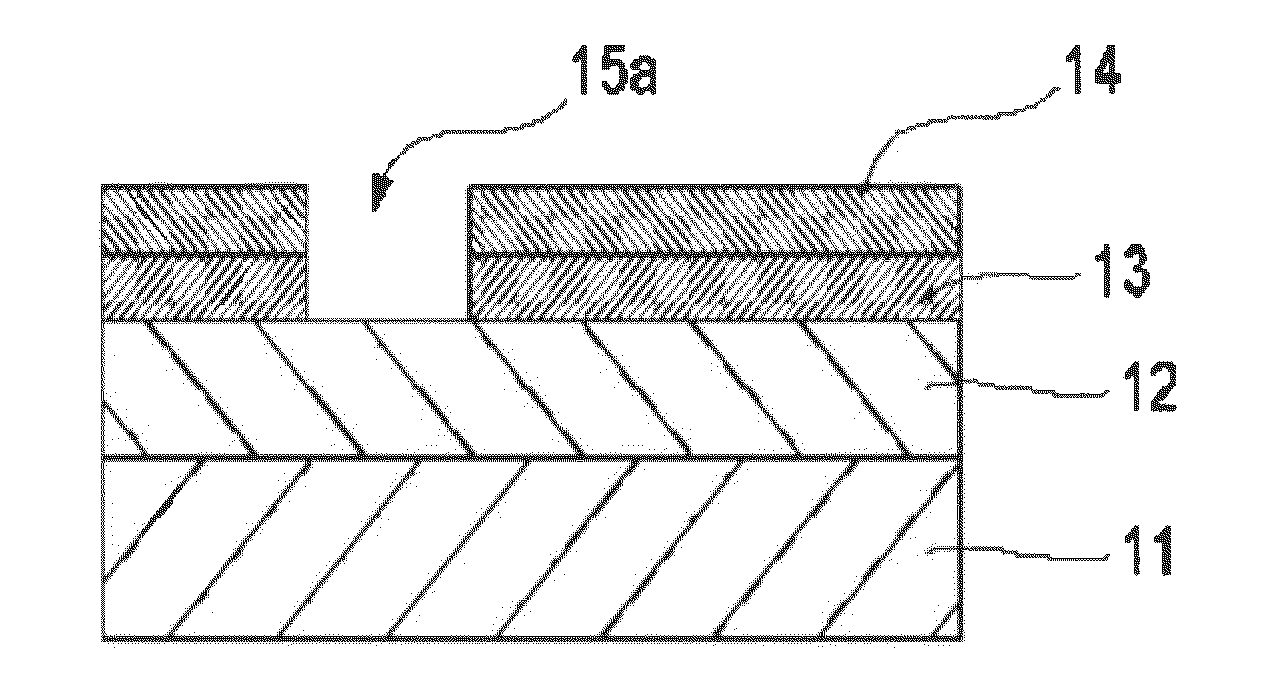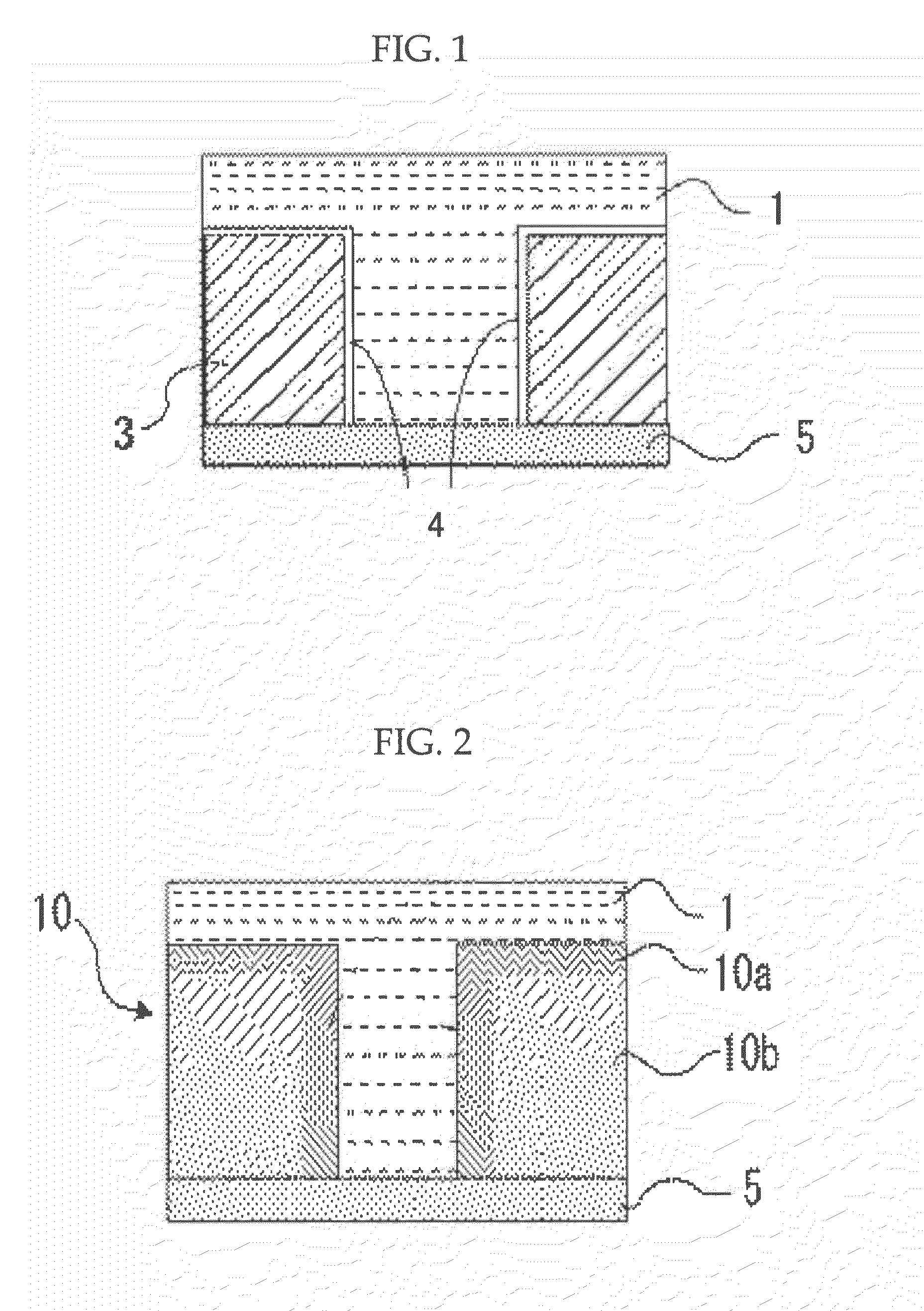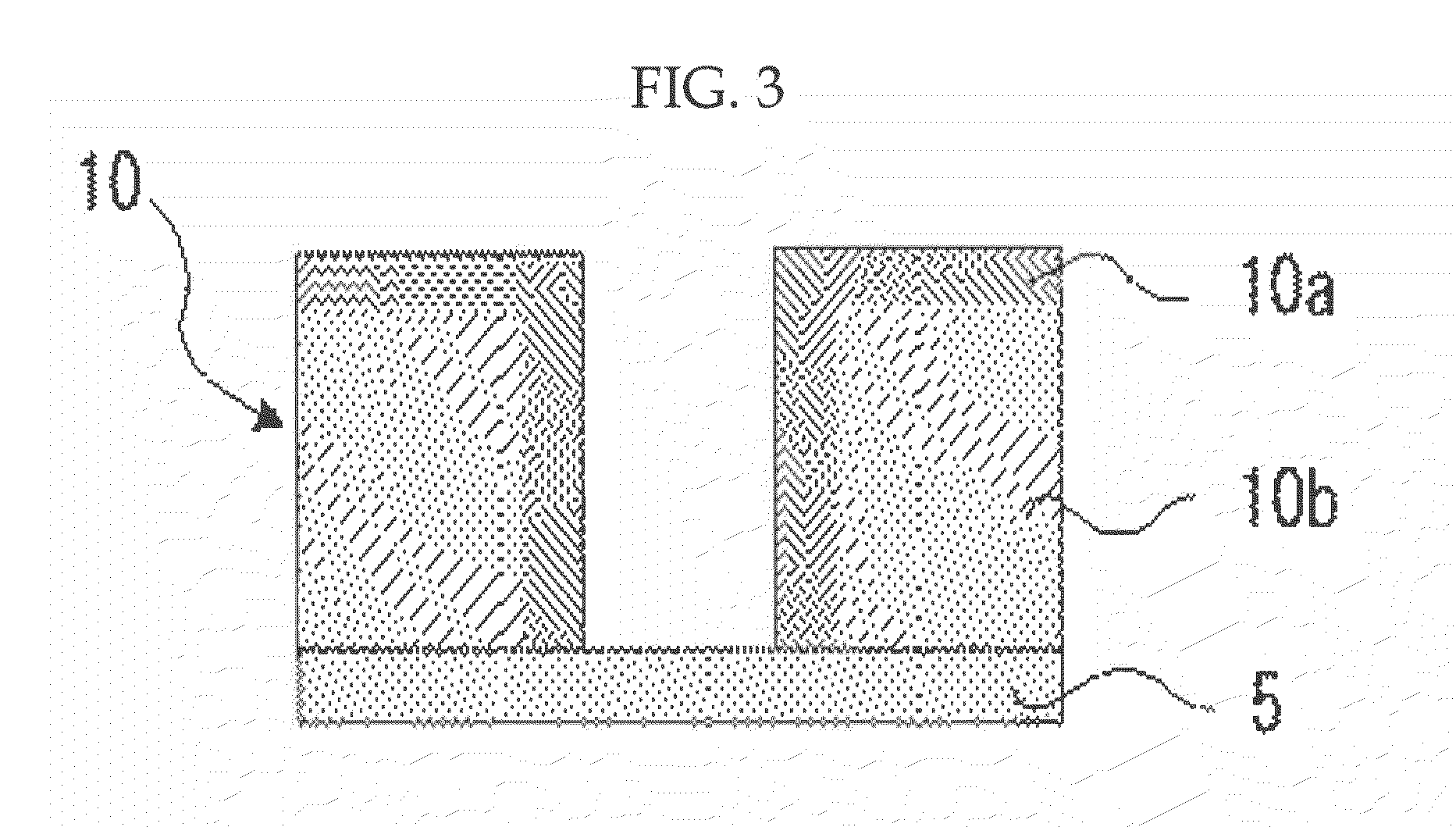Resist pattern thickening material, semiconductor device, and production method thereof
a technology of resist pattern and thickening material, which is applied in the direction of solid-state devices, medical preparations, granular delivery, etc., can solve the problems of low throughput of resist pattern, high cost of updating, and inability to meet low-cost mass production, etc., and achieve the effect of thickening resist pattern
- Summary
- Abstract
- Description
- Claims
- Application Information
AI Technical Summary
Benefits of technology
Problems solved by technology
Method used
Image
Examples
example 1
Preparation of the Resist Pattern Thickening Material
[0149]The resist pattern thickening materials A to Q each having the formulation depicted in Table 1 were prepared.
[0150]Note that, in Table 1, “a thickening material” means a resist pattern thickening material; and “A” to “Q” are corresponded to the resist pattern thickening materials A to Q. Among the resist pattern thickening materials A to Q, the resist pattern thickening materials A, B, P and Q are comparative examples, and the resist pattern thickening materials C to O are examples (the embodiments of the invention). In Table 1, the unit for the value written in the parenthesis represents “mass (g)”.
[0151]The cyclodextrin compound of any of the resist pattern thickening materials C to O in the columns of “Compound expressed by general formula 1” is the cyclic compound expressed by the general formula 1. The cyclic compound expressed by the general formula 1 was added to each resist pattern thickening material in an amount of...
example 2
Production of a Semiconductor Device
[0169]As illustrated in FIG. 4A, an interlayer insulating film 12 was formed on a silicon substrate 11, and as illustrated in FIG. 4B, a titanium film 13 was formed on the interlayer insulating film 12 by sputtering. Then, as illustrated in FIG. 4C, a resist pattern 14 was formed by a double patterning method, and the titanium film 13 was patterned by a reactive ion etching using the resist pattern 14 as a mask to thereby form an opening 15a. As well as sequentially removing the resist pattern 14 by the reactive ion etching, as illustrated in FIG. 4D, an opening 15b was formed in the interlayer insulating film 12 using the titanium film 13 as a mask. Then, the titanium film 13 was removed by a wet treatment, and as illustrated in FIG. 4E, a TiN film 16 was formed on the interlayer insulating film 12 by sputtering, followed by forming a Cu film 17 on the TiN film 16 by electroplating. Thereafter, as illustrated in FIG. 4F, the surface was flattened...
PUM
| Property | Measurement | Unit |
|---|---|---|
| Fraction | aaaaa | aaaaa |
| Fraction | aaaaa | aaaaa |
| Fraction | aaaaa | aaaaa |
Abstract
Description
Claims
Application Information
 Login to View More
Login to View More - R&D
- Intellectual Property
- Life Sciences
- Materials
- Tech Scout
- Unparalleled Data Quality
- Higher Quality Content
- 60% Fewer Hallucinations
Browse by: Latest US Patents, China's latest patents, Technical Efficacy Thesaurus, Application Domain, Technology Topic, Popular Technical Reports.
© 2025 PatSnap. All rights reserved.Legal|Privacy policy|Modern Slavery Act Transparency Statement|Sitemap|About US| Contact US: help@patsnap.com



